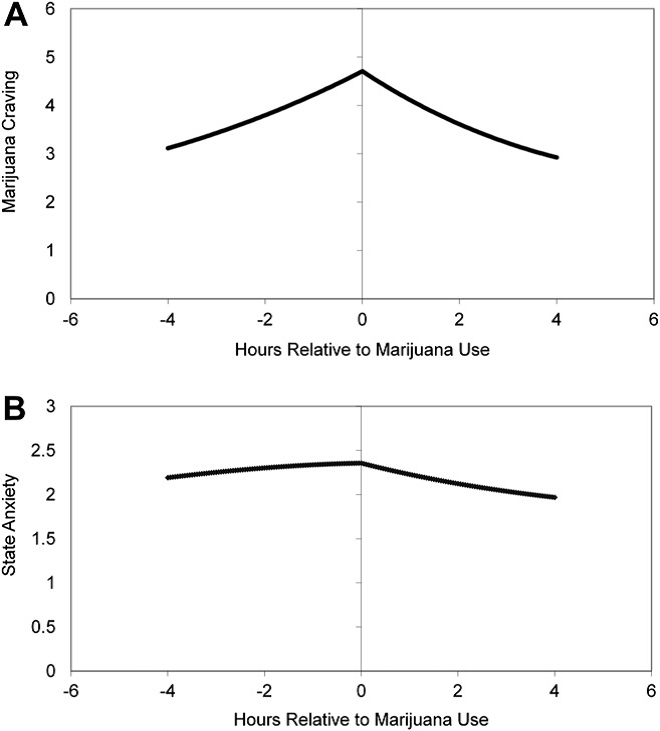STASH, Vol. 8(7) – In the moment: Proximal antecedents of marijuana use
The Addiction Syndrome (Shaffer, LaPlante, & Nelson, 2012a; Shaffer et al., 2012b) model suggests that addictive behavior develops, in part, over time as a consequence of specific distal and proximal antecedents — factors that create longer-term and shorter-term risk, respectively. Although researchers have given a great deal of scientific attention to longer-term risk factors, they have paid less attention to the proximal antecedents of addictive behavior (Najavits, 2012). This week’s STASH reviews analyses of ecological momentary assessments from marijuana users to identify common proximal events for marijuana use (Buckner, Crosby, Silgado, Wonderlich, & Schmidt, 2012).
Methods
- Researchers recruited 49 18-22 year old college students (39% female) who used marijuana during the past 3 months.
- Students used Personal Digital Assistants (PDA) for two continuous weeks to complete brief survey items (i.e., ecological momentary assessments (EMA)) in as close to real time as possible (i.e., ecological momentary assessments; EMA) under three conditions:
- Signal contingent (i.e., random survey request initiated by PDA alarms)
- Interval contingent (i.e., survey as pre-determined points, like bedtime)
- Event contingent (i.e., surveys completed each time a participant was about to use marijuana)
- The surveys assessed a range of health-related behaviors, including marijuana use patterns, craving, state anxiety, and situational context (e.g., alone or with friends).
Results
- Mixed effects linear models (Figure) of “pre” and “post” marijuana use patterns for craving and anxiety suggested that:
- Craving increased significantly prior to marijuana use, F (1, 1409.75) = 60.3, p < .001;
- Craving decreased significantly following marijuana use, F (1, 1412.33) = 109.83, p < .001;
- Anxiety did not increase significantly prior to marijuana use, F (1, 1410.34) = .04, p > .1;
- Anxiety did not decrease significantly prior to marijuana use, F (1,1413.73) = 2.91, p > .05.
- Nearly 80% of reported marijuana use occurred during social situations.

Figure. Momentary relationships between craving and anxiety, and marijuana use. Click image to enlarge.
Limitations
- This study included a very small sample size.
- The nature of the sample consisted of college students enrolled in psychology classes. Although college students are at high risk for marijuana use, this study should be repeated using other populations.
- The study advances knowledge because the EMA reduces the likelihood of memory effects on self-report; however, self-presentation effects might have affected students’ reports.
Concluding Thoughts
Few studies have examined real-time precipitants of addictive behavior, so this study advances what we know about in-the-moment initiation of risky behavior. Specifically, this study suggests that craving and social situations elevate the risk for marijuana initiation among recent marijuana users. Contrary to popular opinion, marijuana use had a weak momentary relationship with anxiety. To advance the study of proximal antecedents, researchers should consider expanding the diversity of factors related to smoking marijuana, and look at the specificity of these factors for marijuana use. It is unclear whether the factors are specific to marijuana use or something more general.
-Debi LaPlante
What do you think? Please use the comment link below to provide feedback on this article.
References
Buckner, J. D., Crosby, R. D., Silgado, J., Wonderlich, S. A., & Schmidt, N. B. (2012). Immediate antecedents of marijuana use: An analysis from ecological momentary assessment. Journal of Behavior Therapy and Experimental Psychiatry, 43, 647-655.
Najavits, L. M. (2012). Proximal Influences on Addiction. In H. J. Shaffer, D. A. LaPlante & S. E. Nelson (Eds.), The APA Addiction Syndrome Handbook (Vol. 1. Foundations, Influences, and Expressions of Addiction, pp. 3-25). Washington, DC: American Psychological Association Press.
Shaffer, H. J., LaPlante, D. A., & Nelson, S. E. (Eds.). (2012). The APA Addiction Syndrome Handbook (Vol. 1. Foundations, Influences, and Expressions of Addiction). Washington, D.C.: American Psychological Association Press.
Shaffer, H. J., LaPlante, D. A., & Nelson, S. E. (Eds.). (2012). The APA Addiction Syndrome Handbook (Vol. 2. Recovery, Prevention, and Other Issues). Washington, D.C.: American Psychological Association Press.